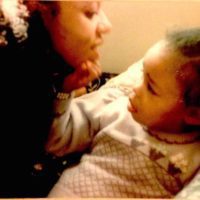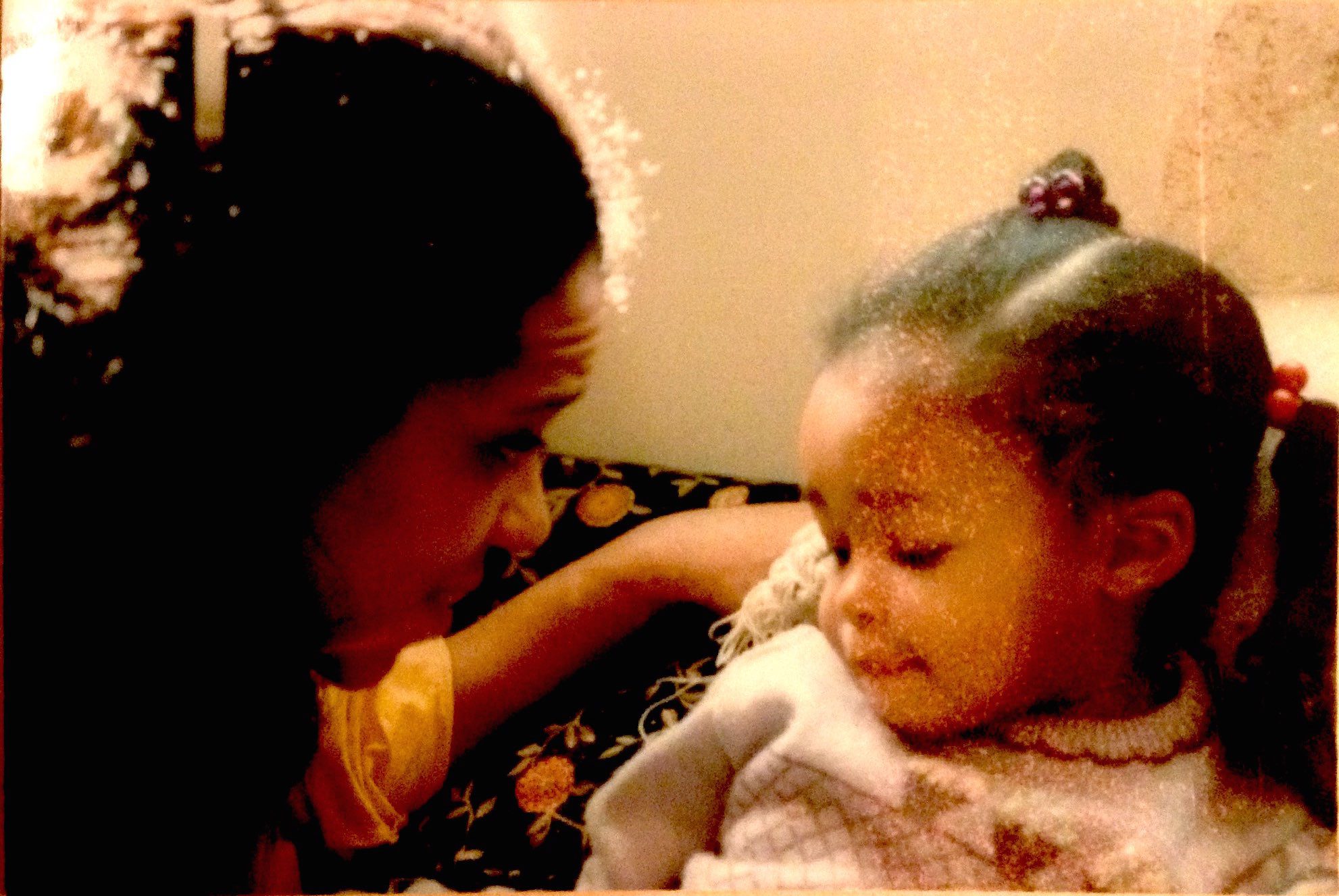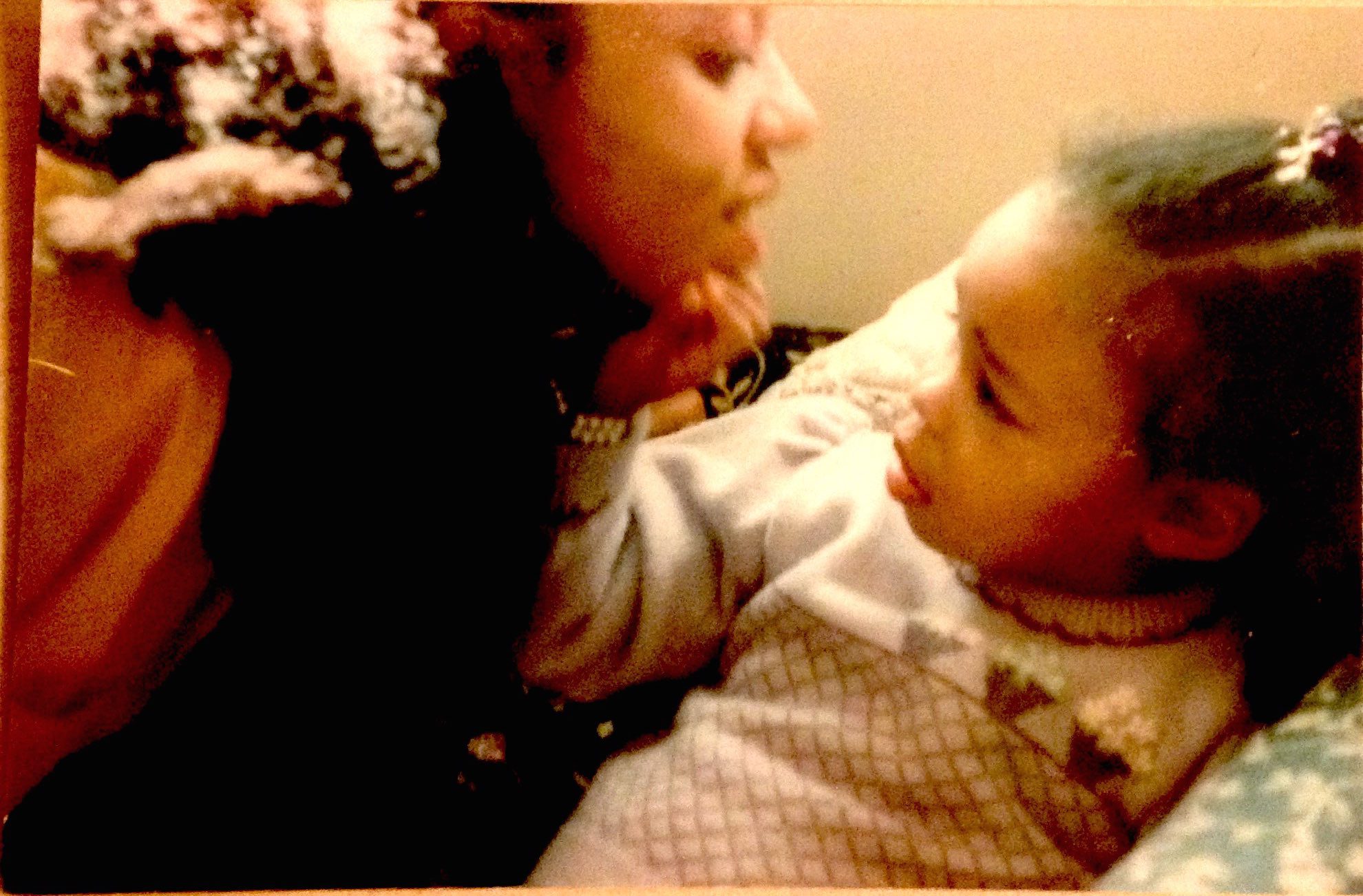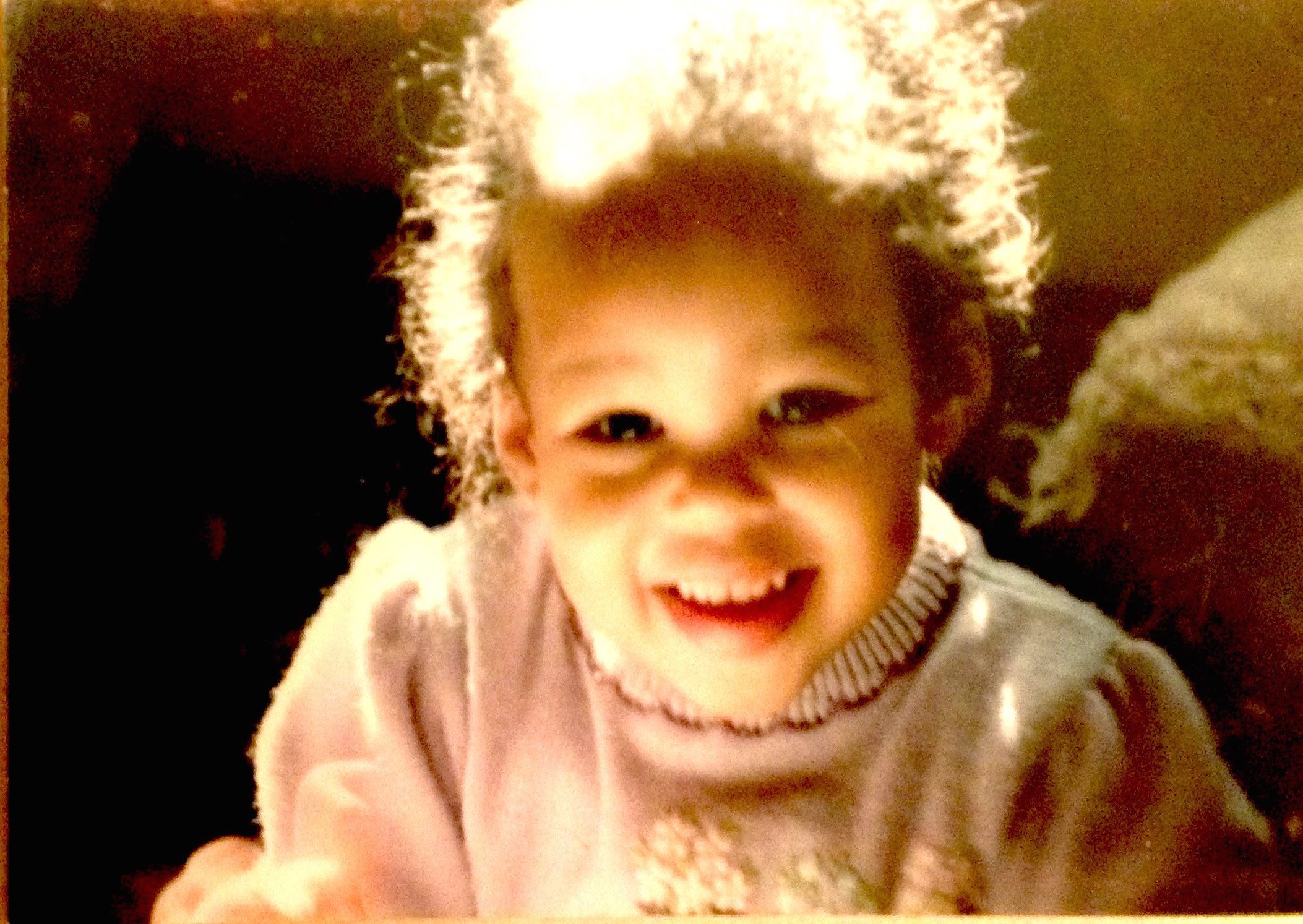“There is no greater agony than bearing an untold story inside you.”
– Maya Angelou
My mother is exhausting. When she comes through the door I brace myself to be loved. I prepare myself to be cared for. Her love is suffocating. I come up for air between squeezes and questions about my health and overdue library books.
I am my mother’s first and true love. She says she dreamt of me before I was born. In 1981, before she even knew of her pending motherhood, she dreamt that her sister (my namesake) told her, “There’s a little girl inside you.” And, it seems, for the rest of our lives, that’s where she wants to keep me. When she was pregnant—when she was full of me—she was full of a love—so big she didn’t know what to do with herself. But be happy.
My grandmother had attempted to abort my mother three times. I say this apart from politics, religion, generalities, or sentimentality: My grandmother tried to kill my mother three times before she was born. Grandmother has told the story of it all more than once.
There are, have been, and will be, plenty of women who give birth to children who could not be terminated. Part of being a mother is making a decision and sometimes having the defiance of that decision live within her—live outside of her. My mother taught me that. I don’t think a mother who loved her child would tell her how much she’d wanted her dead—how hard she had tried to make it so. My mother tells me grandma was a sociopath.
My mother is obsessed with four pictures. In the photos I am three, she, twenty-eight. She had the pictures put into a four set frame. The first photo is a portrait shot of her and I side by side. While my mother is proudly smiling at the camera, I am looking down, sulking over some slight that had occurred. The next photo, her face is turned to me, head angled down, with me still looking away and forlorn. She is saying something, asking something of me, calling me back. The third photo is our favorite. Her position hasn’t changed. But my face has turned up to hers and my hand is touching her mouth. My fingers are tugging at her lips. My mother says that when she read to me I’d touch her mouth. Sometimes I’d tug at her mouth as if I was looking to see where the words came from. The fourth photo is just me, smiling.
To me, my mother’s body has always been the safest place—a place for me to return and to transform. The frame broke once during one of my many moves. The photos now lie flat on my dresser and nightstand, next to some pills and a book.
Whenever I hear someone recount a childhood memory I am jealous. My memory is compromised. I’d like to blame it on my illness but something always gnaws at me when I try to blame it on multiple sclerosis. It makes more sense to me—even without discussing this at length with any trained medical professional who’d perhaps know better, that my memory is the way it is because I tried to kill myself by taking hundreds of pills of varying intents and strengths. I was unconscious with a fever for five days. Since waking up things have been choppy, erratic. Many of my childhood memories are based on the telling of someone else. I had to ask my mother to tell me stories, like when I was little. I needed her and my father, but after those feverish days I’m not sure of my own image, or my mother’s mouth.
When I was abroad my mother sent me postcards. They were brief and rich in her way—pontificating on life and sexuality—wanting me to know how love is something beautiful and moving and incongruent, with some question, like, “Do you have a hat?”
In our recent text exchanges I see a few lines about her mother and abortions, specifically, a back alley abortion at fifteen years old. My mother then discusses a Google alert she has from our shared calendar, saying I have a waxing appointment this afternoon.
That is our relationship—a story that remains untold on my end. Something inside of me that is an agony I want to unburden myself from—the knowledge that my mother’s mundane and every day is abnormal and painful for me. Our conversations are affectionate, yes, and brutal and hysterical.
To tell our story, her story, my own—I have to start at the beginning and I can’t find the start, not for her or myself. It seems too subjective and arbitrary to try.
“This one is just not coming out,” is a common phrase in delivery rooms for stubborn babies that sometimes end with cesarean births. It’s what the on-call obstetrician said to my mother. I was an emergency cesarean. It’s also what the doctor told my grandmother when my mother could not be pulled from her womb. Three tries, and my mother would not let go. My mother would not abort the womb or the world.
“You’re here aren’t you?” her mother told her.
When grandmother’s first attempt failed, how long did she wait for the next? And after that, again, how long? Could my mother see? Could she hear? A study in Ireland suggests that babies in the womb can detect sound through movement as early as fourteen weeks. Light can be transmitted through the baby’s fused eyelids, and around week twenty-six they can blink in response to light.
I read about sacs—the embryo and the yolk. Both seem to invent themselves in preparation for the group of cells that will need so much nourishment—like an anxious hostess. I think about my grandmother’s body, unafraid and wholly unwelcoming.
Two things: my grandmother hated every one of her children and was not shy about letting them know, and they were all born right on time. My mother battled clinical depression nearly her whole life, but there is this: she won. She tells me that my infancy and childhood are among the happiest of times, for both of us.
I think about a needle—somewhere it shouldn’t be, intrusive. I think about hangers or knitting tools, things neither my grandmother nor mother mention.
My mother has a particular way of hugging. I don’t think she has ever hugged me in the way I see hugs performed. My mother’s hugs are more squeezing, a squish, cheek-pinching—kissing and combustion.
I used to think these hugs wanted to consume me—and put me back in her tummy.
“Don’t do that, mommy,” I said.
When the doctor said a cesarean was necessary she says she was dismayed. She wanted a natural childbirth.
“I wanted to feel the passage of you through the cervix.” She gestures her hands like a river from her body.
There is no start to the story, but there’s an arc. It’s my mother incubating in hatred and surviving to love me.
I came into this world asleep, with my nose turned up. Indeed, it was only when the nurses began poking me with tubes and needles that I stirred at all, and when I did it was a small whimper, Mother says.
My mother says that when she held and squeezed me, I looked entitled and almost bored.
The photos of my mother as a girl: she is looking away or crying.
Wouldn’t anyone cry, if by the time she could speak she already knew her beginning was supposed to be an end? My mother knows that nothing is purely good or purely evil. That there are no monsters, only people. I have the pictures to remind me.
***
Photographs provided courtesy of author.







